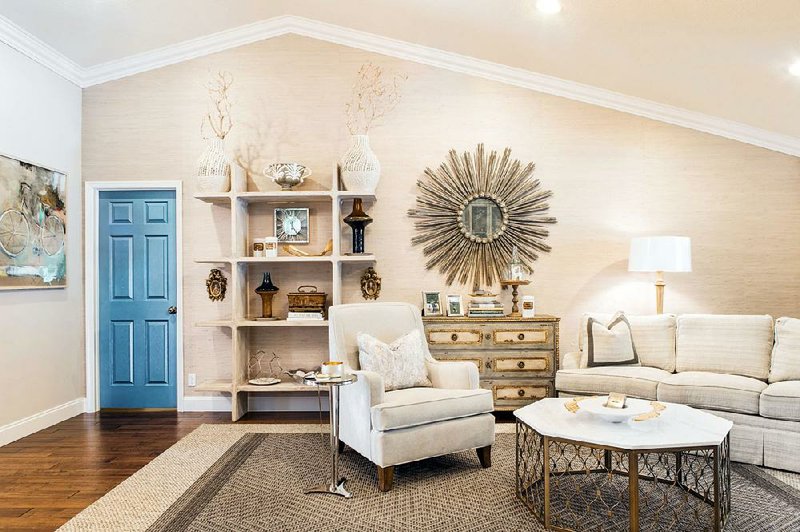The hardest part is starting. I remind myself as I face the daunting empty interior. DC and I closed on our new house last week, after some turbulence, which is a column for another day, after I stop hyperventilating.
After some last-minute wrangling, and taking turns giving each other CPR, we signed all the documents, then went back to the house that was officially ours.
As I walked through the empty rooms, two thoughts collided head-on like a pair of loaded moving trucks: One, this house is going to be great, and, two, I have miles to go to get there.
Though I know what to do first -- start with the shell -- knowing is to doing what wanting is to having. My overwhelmed self realizes how critical design decisions for floors and walls are, how these choices set the course for every design decision that follows. If you get the backgrounds right, you have a shot at making the whole house cohere. Get them wrong and you harpoon any hope.
After floors and walls, come window coverings and furniture, followed by art and accessories. Though never easy, decor decisions get easier as you go. But even the most experienced find those first choices paralyzing.
"Is it just me?" I ask interior designer Barbara Murtagh Nash, owner of Blue Sky Environments Interior Decor, of Sunrise, Fla.
"Even for professional designers, that jumping off point is the hardest," confirms Nash, who has been in the business 30 years, "because you have to commit to a look."
"It's like choosing a college major, or a getting married," I add. "One choice and everything else is off the table."
"That first design decision determines the whole vibe," she says. "Finding the right inspiration can take a while."
Only I don't have a while. I need to move in.
In search of help, I go to the office next door and tap on the door. Ken Olsen, an interior designer from Winter Park, Fla., has the misfortune of having his office next to mine. I ask if I can hire him for a couple hours. What can he say?
We both know this session will be more therapy than consulting. We walk through the new house. We walk through my current house. We mull color. He makes suggestions and reaffirms my instincts. (Yes, you can make the existing wood floors work, but you will be happier if you refinish them.) And he gives me some fresh ideas.
For instance, he suggests painting the whole interior in a neutral cream, then accenting strategic walls with bold colors -- coral, marigold, sage, twilight blue. He walks me through how to balance the colors through the house.
"I never would have thought of that," I say, trying to picture this.
"It will look more designed," he says.
"And not like I did this myself?" Which is exactly why you hire a pro -- to get unstuck.
This got me thinking ... what other moves do designers make that do-it-yourself decorators don't because we lack the training or creative courage? I run this question by Nash, and asked her to share more tricks of the trade:
• Pros treat vertical space. Do-it-yourselfers often focus on furniture that goes on the floor and overlook the top half of the room, Nash said. Especially now that so many ceilings are 9 feet high or higher, pulling the eye up is important. Designers do that with ceiling-to-floor drapery, dramatic ceiling light fixtures, tall tree branches in vases, and floor lamps.
• They see rooms for what they're not. A trained designer can see a dining room as a library, or a living room as an office, she said.
• They see furnishings as flexible. By looking at a piece for its properties, not its current use, pros can often see multiple uses for a single piece. For instance, they see an old door as a headboard, a kitchen table as a desk, and a china hutch as a bookcase.
• They put a new spin on old objects. A good designer can look at something ordinary or outdated, add a twist, and renew it. For instance, adding a marble base and a new shade to a tired lamp can turn it into a luxury accessory.
• They customize the common. To save clients the cost of custom drapery, Nash often takes less expensive ready-made drapery panels, and customizes them by adding trim, a border, or a contrasting tie back.
• They create balance. Professionals work to balance pattern, color, furniture styles (if mixing more than one), visual weight, lighting, and surface textures, which is harder than it sounds. For instance, if a room has a lot of hard furnishings, such as a dining room, designers add softness with drapes or flowers. If a room has a lot of rectangular and square shapes, they inject ovals or rounds.
• They call out the architecture. Do-it-yourselfers sometimes overlook what a room has going for it in the way of bones: fabulous moldings, pitched ceilings, archways or interesting doors. One way Nash features interesting details is by painting interior doors throughout a house a rich contrasting color, in a satin finish. "If the trim is all white, painting both sides of interior doors in a bold tone like deep gray, navy or teal, makes doors look like a piece of furniture," she said.
Marni Jameson is the author of two home and lifestyle books, including Downsizing the Family Home -- What to Save, What to Let Go (Sterling Publishing 2016). You can reach her at marnijameson.com.
HomeStyle on 10/28/2017

